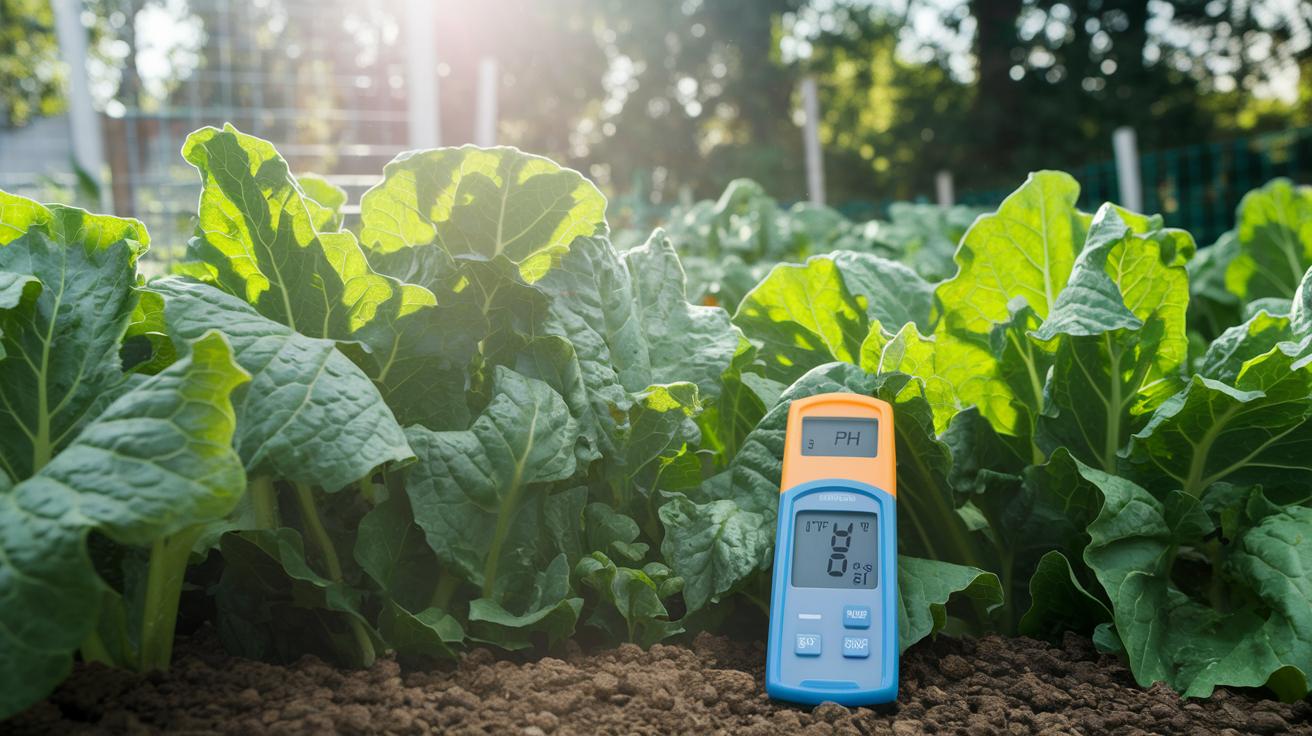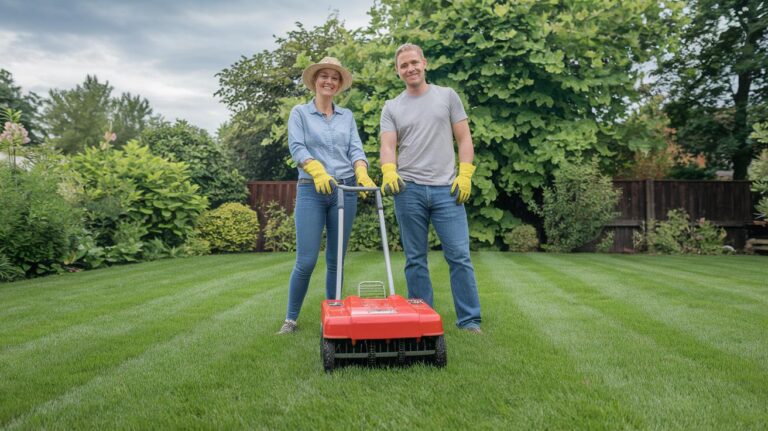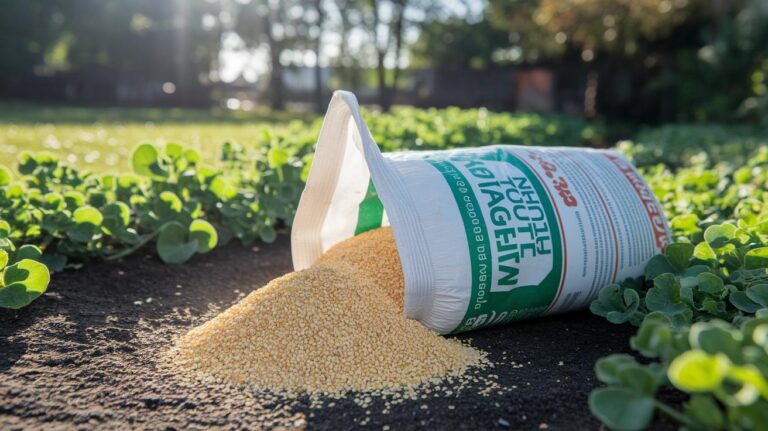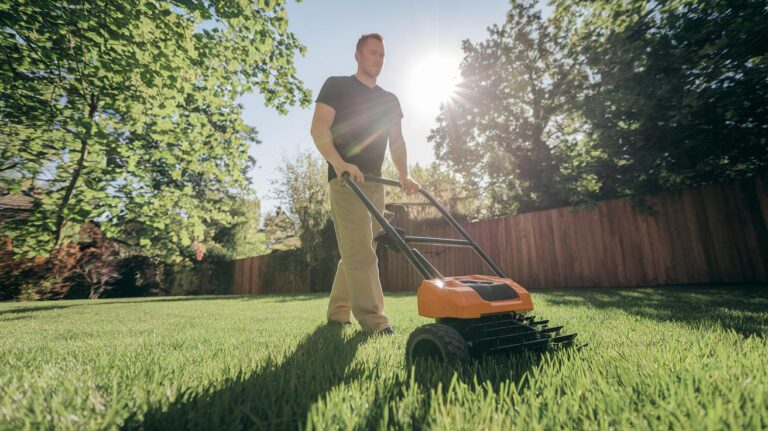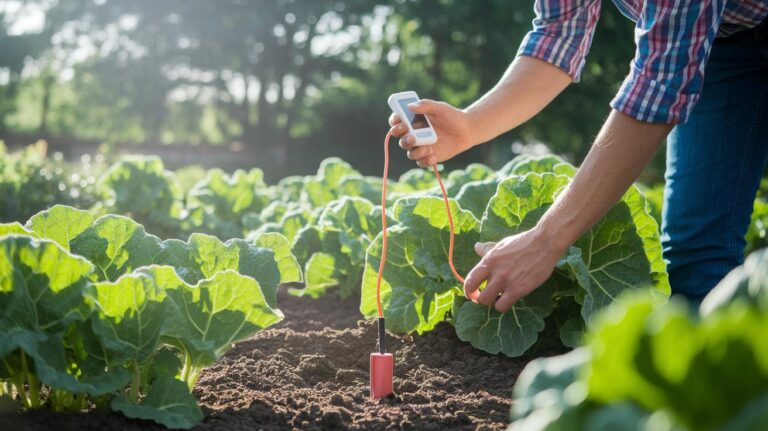Ideal Soil pH Range For Vegetable Garden Amazing
Have you ever wondered why your tomato plants look droopy even after you water them every morning?
It might be soil pH (how acidic or basic the soil is).
When soil pH stays between 6.0 and 7.0, your plants slurp up nutrients like nitrogen (N), phosphorus (P), and potassium (K) without fuss.
But if the pH drifts lower or higher, you’ll start seeing yellow leaves or roots that barely grow.
Oops, I skipped a pH test last year and ended up with sad, straggly vines.
So let’s dig into why that 6.0 to 7.0 sweet spot makes all the difference.
Remember the feel of dark, crumbly soil between your fingers?
That’s how you want your soil sample to feel.
I’ll walk you through simple pH tests you can do right in your yard.
Then we’ll tweak pH with easy fixes.
Try baking soda if your soil is too acidic.
Add sulfur if it’s too alkaline.
Before you know it, your vines will burst with juicy tomatoes.
Ideal Soil pH Range For Vegetable Garden Amazing
Have you ever felt warm soil crumbling between your fingers? When your soil pH (how acidic or basic it is) holds steady around 6.0 to 7.0, veggies perk right up. Roots dive in and leaves spread wide, and plants easily gulp down nitrogen (N), phosphorus (P) and potassium (K). You’ll spot fuller lettuce heads, plumper tomatoes and sturdy carrot roots.
But let your pH climb above 7.5 and things go sideways. Iron, manganese and zinc turn almost invisible to plants. You might notice yellow leaves with dark veins or tiny brown spots on new shoots. High pH can also lock up phosphorus so peppers and beans struggle to blossom or fruit.
On the flip side, dip below 6.0 and aluminum and manganese sneak in at toxic levels (ouch, root tips!). That blocks calcium and magnesium from joining the party. Even a small slide outside 6.0 to 7.0 can stress seedlings (young plants) and slow early growth. It’s a surprise no gardener wants.
| Category | Ideal pH |
|---|---|
| Root veggies | 6.0 to 7.5 |
| Leafy greens | 6.0 to 7.0 |
| Fruiting crops | 6.0 to 6.8 |
Keeping your soil snug in that 6.0 to 7.0 sweet spot is a tiny tweak that pays off big. Your veggies get all the nutrients they crave without weird spots or stress. You’ll taste the difference in every bite.
Planting now sets you up for a summer harvest.
Why soil pH matters for nutrient availability in vegetable gardens
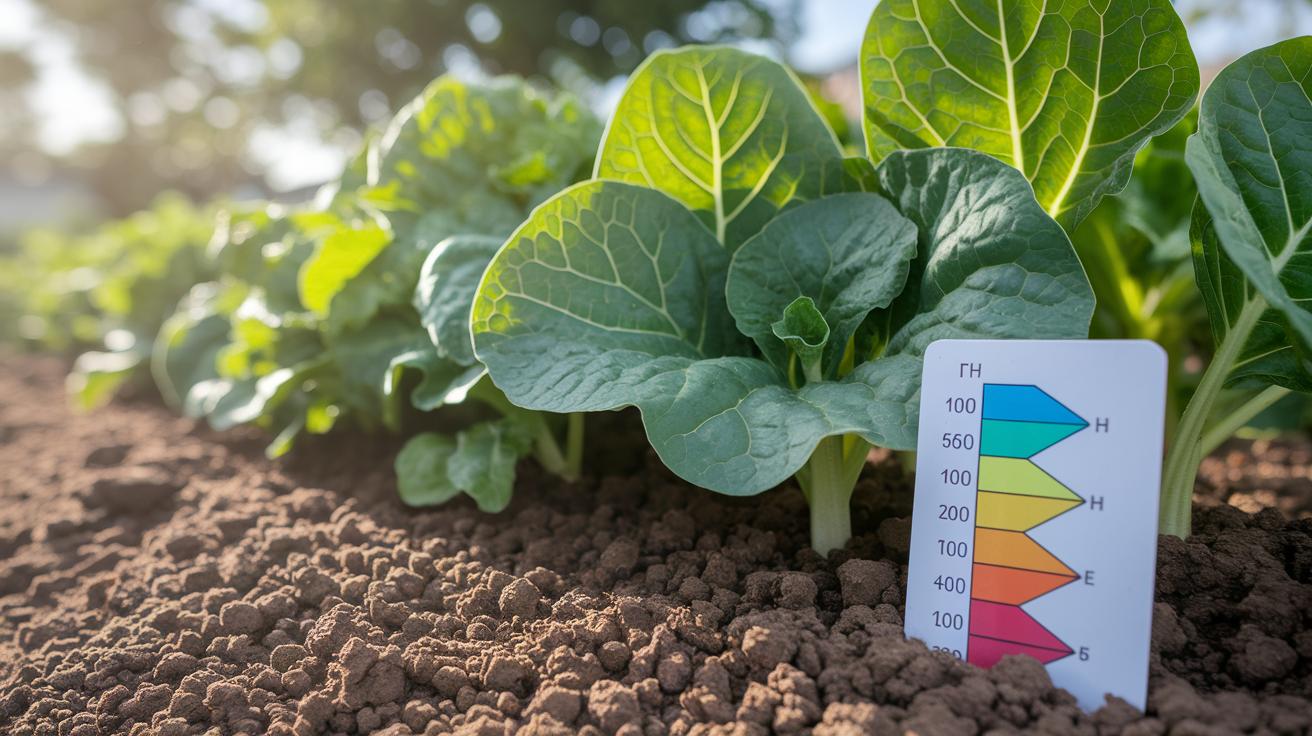
Have you ever run your fingers through soft, damp soil and smelled that fresh, earthy scent? That feel and smell come from all the living bits in dirt. Soil pH (measure of acidity or alkalinity) decides which nutrients are easy for your veggies to grab.
When soil pH sits near neutral, around 6.0 to 7.0, it helps nitrogen (N), phosphorus (P), and potassium (K) stay dissolved like little snacks in water. It also makes sure iron, manganese, and zinc are ready to join the feast. Slide too low or too high, and some nutrients lock up tight.
Ideal Soil pH Range
| pH Range | Nutrient Availability |
|---|---|
| Below 6.0 | Phosphorus ties up with iron and aluminum, hiding both P and iron |
| 6.0–6.5 | All major nutrients flow freely; micronutrients stay in solution |
| 6.5–7.2 | N, P, K are just right; some micronutrients start to slip away |
| Above 7.2 | Iron and manganese turn insoluble, out of your plant’s reach |
| Above 7.5 | Zinc and phosphorus bind to calcium, limiting what plants can absorb |
Got pale yellow leaves with green veins? Check the Iron Chlorosis symptoms above.
Soil testing methods for determining garden pH
If you want to see how acidic or basic your garden soil is, its pH (a scale that shows how sour or sweet your dirt behaves), you’ve got two simple paths. A home kit or digital meter lets you grab readings in minutes. I’m a fan of the best soil pH test kit for gardeners for quick checks.
But if you need exact numbers or suspect a hidden nutrient gap, a lab report is the way to go. And pro tip: use a clean bucket, trust me, I once scooped cores with muddy rain boots on. Now let’s walk through the sampling steps.
-
Choose sampling spots
- Stroll through your garden and pick five to ten spots.
- Mix sunny beds with shady corners to catch every pH quirk.
-
Measure the right depth
- Aim for four to six inches down, right where most roots nibble.
- You’ll feel the warm earth crumble as you test.
-
Collect multiple cores
- Use a trowel (small hand shovel) or soil probe to scoop little soil cores.
- Think of each scoop as a mini dirt fingerprint.
-
Mix and label
- Stir all the scoops in a clean bucket for an average sample.
- Shovel your mix into a clean bag or jar and jot down the date, bed name, and depth.
Home kits cost less but can swing in accuracy depending on how clean and calibrated they are. Lab reports dig into tiny nutrient levels and give exact pH. Kits or meters show you a quick trend you can track.
Aim to test every year or two, or do a quick check each season if you spy yellow leaves or stunted sprouts.
Happy digging.
Adjusting soil pH with lime and sulfur amendments
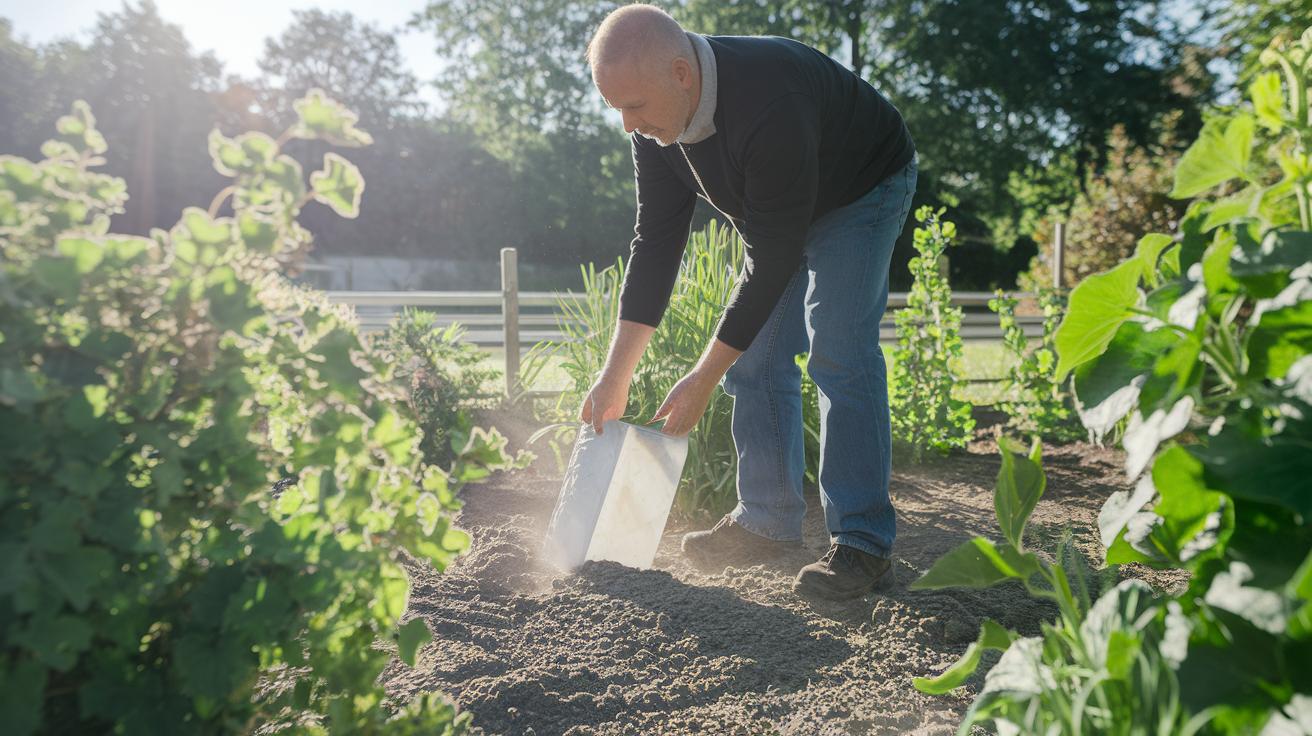
Plants don’t like soil that drifts away from the 6.0–7.0 pH (a measure of soil sourness or alkalinity). Too sour and aluminum or manganese can sting roots. Too soapy (alkaline) and iron, manganese, and other micronutrients hide from thirsty roots. Have you ever poked a trowel in and wondered why your tomatoes look pale? That’s why we add lime or sulfur to bring soil back to that cozy middle.
| Amendment | What It Is | Rate | When to Add | What It Does |
|---|---|---|---|---|
| Dolomitic lime | Crushed limestone with calcium (for firm cell walls) and magnesium (a plant nutrient) | 5–10 lbs per 100 sq ft | Fall or early spring | Raises pH and boosts magnesium for sturdier stems |
| Calcitic lime | Pure calcium carbonate limestone | 5–10 lbs per 100 sq ft | Fall before heavy rains | Raises pH without changing magnesium levels |
| Elemental sulfur | Fine sulfur granules | 1–2 lbs per 100 sq ft | Late fall so soil microbes can work | Slowly lowers pH as microbes turn sulfur into acid |
| Gypsum | Calcium sulfate mineral | 10–15 lbs per 100 sq ft | Anytime during the growing season | Improves soil texture and water flow, with little pH change |
Be patient. It takes time! Pelletized lime works faster than powder but still needs about three months for a clear pH rise. Elemental sulfur can take four to six months while soil bacteria break it down.
Always test your soil every two to three months and give it a good watering after you spread amendments. And don’t dump lime or sulfur in one pile. Spread it evenly (oops I once dumped a big scoop in one spot, lesson learned). By keeping an eye on your soil and retesting, you’ll help your garden stay happy without overdoing it.
Crop-specific soil pH preferences for common vegetables
Have you ever poked fingers in soil that felt too sour or too sweet? Soil pH is a measure of soil acidity (how sour or sweet your dirt is). Different veggies have a sweet spot where roots can grab nutrients. Get it right and they’ll shine.
Tomatoes love soil that measures 6.0 to 6.8 on the pH scale. That range helps roots unlock calcium, so your fruits swell red and juicy without those nasty end spots. Carrots also feel comfy in 6.0 to 6.8 soil, helping bright-orange roots grow crisp and sweet. Spinach and lettuce like a bit more wiggle room, from 6.0 to 7.0, to keep leaves mild, not bitter.
Root crops, like beets and turnips, do best in 6.0 to 7.5 pH. That helps them pack in sugars and colors. Beans tolerate 6.0 to 7.5 pretty well, so they’ll grow happily in many beds. Broccoli is a bit fussier, liking 6.0 to 7.0 pH for tight, emerald-green heads.
| Vegetable | Ideal pH |
|---|---|
| Tomatoes | 6.0–6.8 |
| Carrots | 6.0–6.8 |
| Leafy greens (spinach, lettuce) | 6.0–7.0 |
| Root crops (beets, turnips) | 6.0–7.5 |
| Beans | 6.0–7.5 |
| Broccoli | 6.0–7.0 |
Even a tiny pH swing can change things fast. Just 0.2 off and you may spot fewer tomato fruits or brown spots at the blossom end (that’s blossom end rot). Broccoli heads loosen or turn yellow if soil drifts out of 6.0 to 7.0. Beans handle small pH slips, but tuning soil for tomatoes and broccoli really boosts flavor.
Oops, I once let my tomato pH dip and got sad little fruits. But after I added garden lime, those vines popped with full clusters. Back to the garden now. Happy digging!
Strategies for maintaining stable soil pH in vegetable gardens
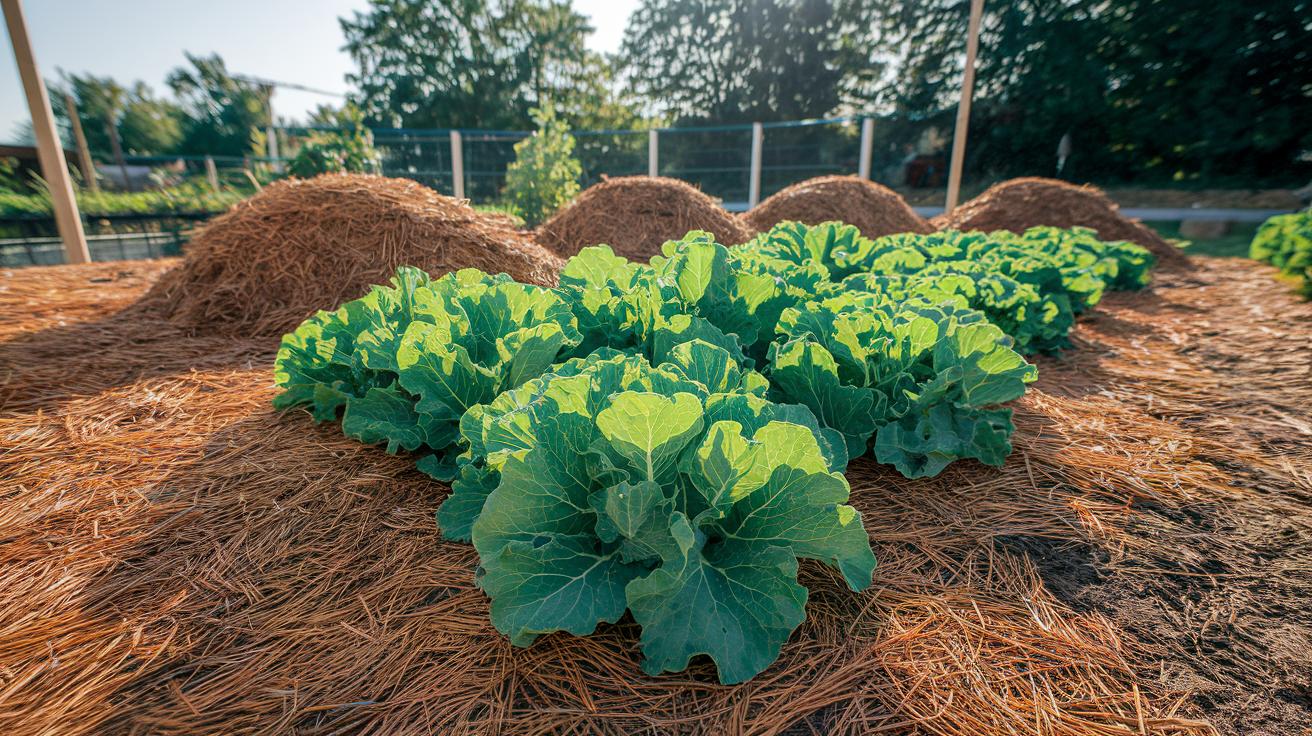
Keeping your soil pH (the measure of how acidic or alkaline your dirt is) in a steady 6.0 to 7.0 range helps veggies thrive. One easy trick is adding plenty of organic matter, think compost (decayed plant bits that make soil rich). Over time, that dark, crumbly mix holds nutrients and stops sudden pH swings. Have you ever felt the warm earth crumbling between your fingers?
-
Add compost each year
Spread 2 to 3 inches of well-aged compost over your garden beds. It feeds the tiny soil microbes and smooths out pH bumps. -
Pick the right mulch
Use pine needles to gently acidify your soil. Or choose wood chips to hold in moisture and keep pH levels even. -
Plant cover crops and rotate legumes
Toss in clover or peas in the off-season. They pull nitrogen into the soil and help balance chemistry when you switch veggies. -
Test your irrigation water pH monthly
In hard-water areas, faucet water can change soil pH over time. A quick monthly check from your hose helps avoid surprises.
Raised beds make pH control even simpler. Your custom soil mix stays put, and you can tweak it without digging up the whole yard. By the way, my cat loves sunning on the edge! For tips on building and managing that perfect blend, check out planning a raised vegetable garden.
Troubleshooting pH-related issues in vegetable garden soils
Ever notice leaves turning yellow between the veins or little fruits coming out misshapen? Those strange signs often mean your soil pH (how acidic or alkaline your soil is) isn’t just right. And when pH strays too far, nutrients can get locked up and your veggies can’t drink in what they need.
| Symptom | What’s Happening | pH Range |
|---|---|---|
| Yellow leaves with green veins | Iron or manganese (minerals plants need) can’t be absorbed | Above 7.2 |
| Brown, sunken spots on tomato bottoms | Calcium can’t move through soil | Below 6.0 |
| Stunted or dark root tips | Aluminum is toxic to roots | Below 5.5 |
| Poor flowering or few fruits | Boron deficiency | Above 7.5 |
| Leaf browning on new growth | Manganese becomes insoluble | Above 7.0 |
| Burned spots on older leaves | Risk of cadmium uptake | Below 5.5 |
When you see these clues, test your soil pH with a simple kit or meter. If your soil is too acidic, add lime (crushed limestone that makes soil less acidic) in small trowelfuls and gently mix into the warm earth crumbling between your fingers. If it’s too alkaline, sprinkle sulfur (element that lowers soil pH) in light doses and blend in compost (decayed plant bits that make soil rich). Think of compost like a sponge: it soaks up moisture and nutrients, then slowly lets them go to your roots.
By the way, I once spilled a bag of compost all over my boots, oops, messy but worth it. Keep a quick garden journal and jot down what you added and when. Then step back and watch your veggies perk up again.
Final Words
From dialing in that 6.0–7.0 sweet spot to testing and tweaking with lime or sulfur, you’ve got a clear path to balanced soil.
We covered why pH shapes nutrient availability, crop-specific needs, plus quick home vs lab tests to track your progress.
Keep up compost additions, mulch choice, cover crops and monthly irrigation water checks for steady results.
Spotted yellow leaves or blossom end rot? You’ll know the fix in no time.
Here’s to healthy roots, happy veggies, and nailing the ideal soil pH range for vegetable garden every season.
FAQ
What is the ideal soil pH range for vegetable gardens?
The ideal soil pH range for most vegetables is 6.0 to 7.0, a slightly acidic to neutral zone that boosts uptake of nitrogen, phosphorus and potassium while preventing nutrient lockout.
How does soil pH affect nutrient availability?
Soil pH affects nutrient availability by changing solubility of key elements. Below pH 6.0 phosphorus ties up with iron and aluminum. Above pH 7.2 iron and manganese become insoluble, risking chlorosis.
How often should I test my garden soil pH?
Testing garden soil pH every one to two years helps monitor changes. Test seasonally if you see plant stress or after major amendments for accurate tracking of soil health.
What’s the difference between home and lab soil pH tests?
Home pH kits and digital meters give quick, on-the-spot readings but vary in accuracy. Lab tests cost more but provide detailed nutrient profiles and precise pH measurements.
How do I adjust soil pH with lime or sulfur?
To raise pH, use dolomitic lime at about 5–10 pounds per 100 square feet, or pelletized lime for faster action. To lower pH, apply 1–2 pounds of elemental sulfur per 100 square feet.
What soil pH do common vegetables prefer?
Common vegetables prefer slightly acidic soil. Tomatoes and carrots thrive at pH 6.0–6.8. Leafy greens grow best between 6.0–7.0. Beans and root crops tolerate up to 7.5.
How can I maintain stable soil pH long-term?
Maintaining stable pH involves adding 2–3 inches of compost yearly to buffer acidity, using pine needle or wood chip mulch, rotating legumes and testing irrigation water pH monthly.
How can I recognize and fix pH-related plant problems?
Yellow leaves may signal iron deficiency at high pH. Blossom end rot on tomatoes links to low pH calcium uptake. Correct issues by testing pH, then applying lime or sulfur as needed.

